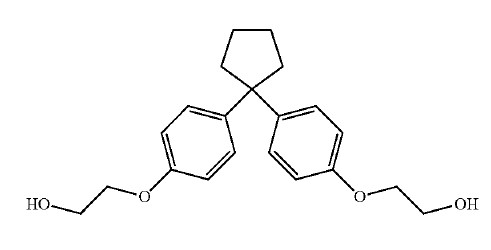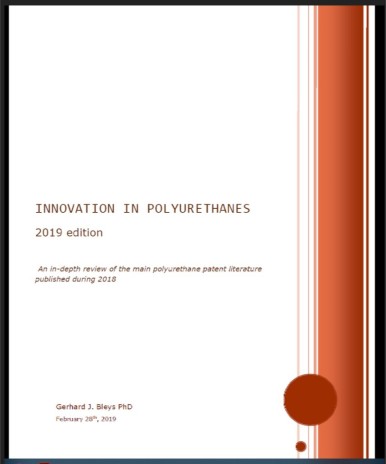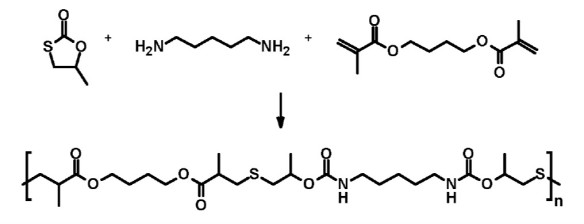Patent Title: METHOD OF PRODUCING FIVE-CARBON RING-CONTAINING COMPOUND AND FIVE-CARBON RING DERIVATIVE-CONTAINING POLYURETHANE, AND FIVE-CARBON RING DERIVATIVE-CONTAINING POLYURETHANE
Number/Link: US2019/0048123
Applicant/Assignee: CHUNG SHAN INSTITUTE OF SCIENCE AND TECHNOLOGY
Publication Date: 14-February 2019
“Gist”: Novel chain extenders are derived from dicyclopentadiene (DCPD)
Why it is interesting: DCPD is a by-product of ethylene production by steam cracking of naphta. It is produced in large quantities and it makes sense to search for new applications. According to this invention, the compound shown below can be prepared by first ‘degrading’ DCPD to cyclopentadiene, followed by reaction with phenol to produce 4-(cyclopent-2-enyl)phenol which is then converted to 4-cyclopentenylphenol (translocation of the double bond). The cyclopentenylphenol is then reacted with phenol followed by reaction with ethylene carbonate to produce the chain extender. In an example the chain extender is reacted with a 4,4′-MDI prepolymer in solvent.
Clever chemistry and an interesting compound, but its usefulness remains to be shown.

Chain extender according to the invention
Posted by Gerhard Bleys on February 15, 2019
https://purpatents.com/2019/02/15/novel-chain-extenders/



